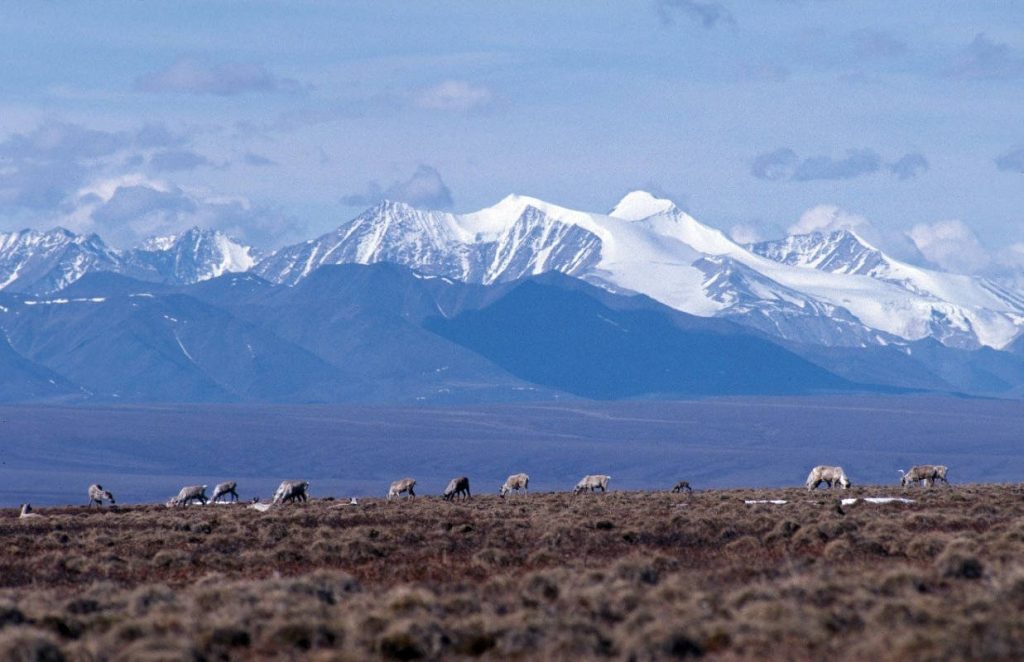Oil development in Alaska’s Arctic remains in limbo
Potential projects in ANWR and NPR-A are in doubt, as the Biden administration weighs responses to lawsuits filed during the previous administration.

Nearly four months after the Trump administration sold oil leases in the Arctic National Wildlife Refuge, oil activity on federal lands remains in limbo as the new administration evaluates its policy options for the area.
President Joe Biden, in an Inauguration Day executive order, paused oil activity in the Arctic refuge, part of a broader environmental and climate-change program. A subsequent executive order on climate change and environmental policy included a moratorium on new oil leasing on federal lands, pending further study.
The review of those public land policies is ongoing, Interior Secretary Deb Haaland said at a White House news conference last week. New oil and gas leases remain on pause, and the department is consulting with stakeholders on the issue, Haaland said at the April 23 news conference.
“We want to make sure that every voice has a seat at the table and it’s really that, as well as using the science. That’s how we’ll do the review and it will go to the president,” she said.
In the Arctic refuge, the Bureau of Land Management on Jan. 18 issued leases to nine tracts to organizations that submitted bids in the Trump administration’s Jan. 6 lease sale. That was the last official step toward development there. “There has been no activity on those leases since then,” BLM spokeswoman Lesli Ellis-Wouters said by email.
There has been significant activity in the four lawsuits challenging the lease sale, however.
In all four cases, the Biden administration and the environmental, Native and Lower 48 state government plaintiffs have been given until June 11 to reassess their positions. In their joint status reports, filed on April 12, the Biden administration and the plaintiffs indicated that an agreement concluding the lawsuits might be forthcoming. The additional time may “avoid unnecessary litigation and conserve the time and resources of the parties and the Court,” said the identical status reports filed in all four cases.
On the west side of the North Slope, meanwhile, another review is underway to reassess Trump administration oil development policies in the National Petroleum Reserve in Alaska.
Haaland on April 16 issued a secretarial order that revoked various pro-drilling orders issued in 2017 by then-Secretary Ryan Zinke. Those revoked Zinke orders included a mandate for increased oil development in the Indiana-sized reserve in Alaska’s Arctic.
There was no 2020 lease sale in the National Petroleum Reserve and, as of late April, no 2021 sale was scheduled.
If a sale were to take place, Ellis-Wouters said, it would be conducted under the new Integrated Activity Plan approved last December. That integrated activity plan opened more than 80 percent of the Indiana-sized reserve to oil leasing, a big change from the 2014 Obama administration plan that kept about half of the reserve off-limits to oil development.
As with the ANWR leasing program, the Trump administration’s NPR-A management plan is facing legal challenges. Two lawsuits filed in federal court in Anchorage last August seek to overturn the plan, and — as with the ANWR lawsuits — recent court submissions suggest an agreement between the parties to settle the litigation may be forthcoming. The parties have until May 10 to file new status reports in both cases after the Biden administration asked for a pause in the litigation “to accommodate review of this matter by new officials within the United States Department of the Interior.”
While existing NPR-A leases are unaffected by the Biden administration pause, court rulings in a different case halted winter development work that had been planned for the most prominent and ambitious project within the reserve, ConocoPhillips’ Willow project. U.S. District Court Judge Sharon Gleason on Feb. 6 granted an injunction pausing construction work planned by ConocoPhillips permission, and the 9th Circuit Court of Appeals on Feb. 13 extended that injunction, finding that the oil company’s plans to mine gravel and build a road would cause irreparable environmental harm.
As a result of those rulings, no development work occurred this winter at Willow, Ellis-Wouters said.
The project, with 590 million barrels in estimated recoverable reserves, would be the westernmost producing oil field on the North Slope if developed. The Willow project won Trump administration approval last October. ConocoPhillips had earlier targeted first production to start as early as 2024 and predicted that output would reach 160,000 barrels per day.
Beyond legal and administrative obstacles, the window for North Slope winter exploration and development has closed in a different way.
The Alaska Department of Natural Resources on April 26 announced the end of the industrial tundra travel season for state lands on the North Slope.
“Snowpack deterioration is widespread, evidenced by large swaths of visible vegetation,” the department’s Division of Mining, Land and Water said in its notice stopping off-road industrial travel in the coastal areas of the North Slope. Three days earlier, the division closed industrial tundra travel in the uplands of the Brooks Range foothills. The lower foothills region was closed to off-road industrial travel throughout the winter of 2020-21 because it never developed the proper combination of snow cover and ground freeze to protect the tundra from vehicle damage.